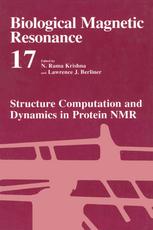

Most ebook files are in PDF format, so you can easily read them using various software such as Foxit Reader or directly on the Google Chrome browser.
Some ebook files are released by publishers in other formats such as .awz, .mobi, .epub, .fb2, etc. You may need to install specific software to read these formats on mobile/PC, such as Calibre.
Please read the tutorial at this link: https://ebookbell.com/faq
We offer FREE conversion to the popular formats you request; however, this may take some time. Therefore, right after payment, please email us, and we will try to provide the service as quickly as possible.
For some exceptional file formats or broken links (if any), please refrain from opening any disputes. Instead, email us first, and we will try to assist within a maximum of 6 hours.
EbookBell Team

4.7
26 reviewsVolume 17 is the second in a special topic series devoted to modern techniques in protein NMR, under the Biological Magnetic Resonance series. Volume 16, with the subtitle Modern Techniques in Protein NMR , is the first in this series. These two volumes present some of the recent, significant advances in the biomolecular NMR field with emphasis on developments during the last five years. We are honored to have brought together in these volume some of the world s foremost experts who have provided broad leadership in advancing this field. Volume 16 contains - vances in two broad categories: I. Large Proteins, Complexes, and Membrane Proteins and II. Pulse Methods. Volume 17 contains major advances in: I. Com- tational Methods and II. Structure and Dynamics. The opening chapter of volume 17 starts with a consideration of some important aspects of modeling from spectroscopic and diffraction data by Wilfred van Gunsteren and his colleagues. The next two chapters deal with combined automated assignments and protein structure determination, an area of intense research in many laboratories since the traditional manual methods are often inadequate or laborious in handling large volumes of NMR data on large proteins. First, Werner Braun and his associates describe their experience with the NOAH/DIAMOD protocol developed in their laboratory.